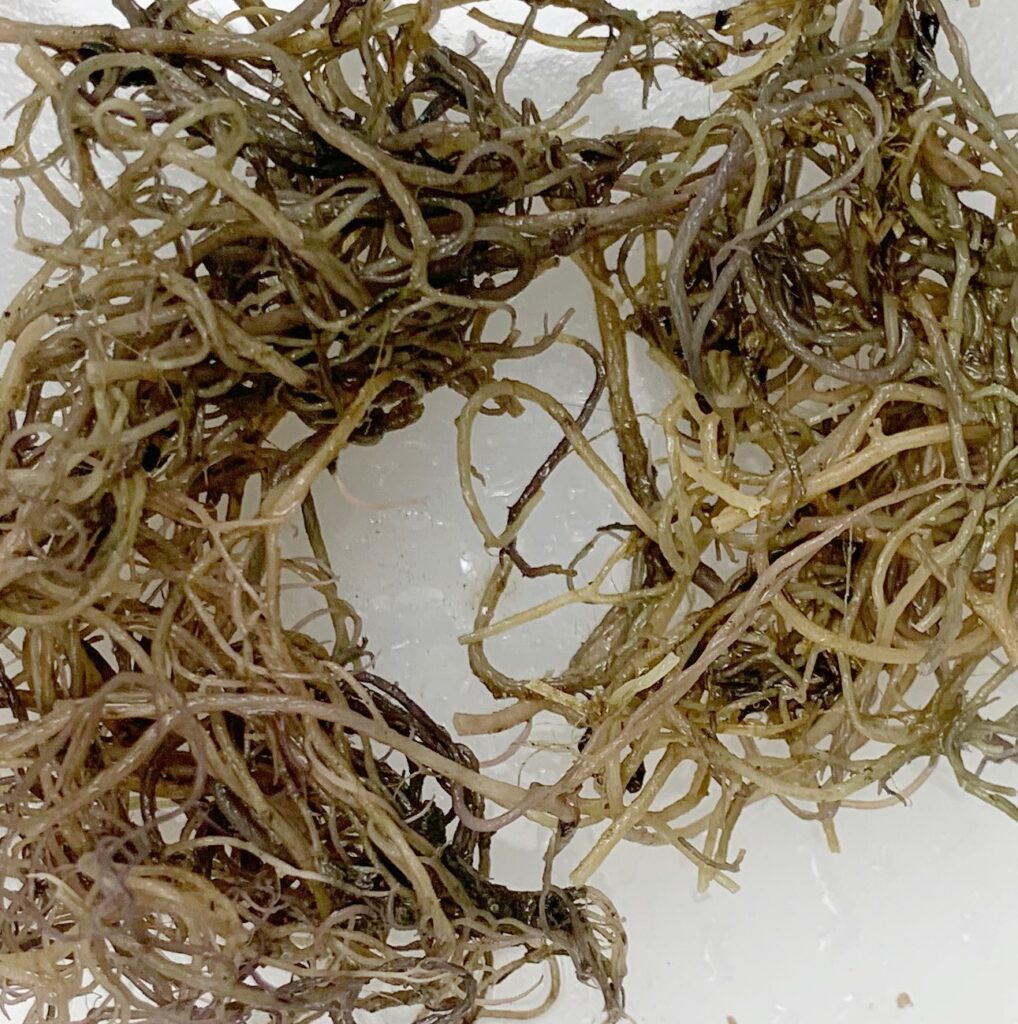Most of the world’s agar is sourced from cultivated species of Gracilaria. Over 95% is grown in China and small amounts are cultivated or harvested elsewhere e.g. Chile. Agar is also extracted from other species including Gelidium, Pterocladia, Gelidiella & Ahnfeltia. These seaweeds are typically wild harvested in Chile, Morocco, South Africa, France, Spain & Portugal
Agar can be extracted in a variety of ways, but the basic methodology revolves around dissolving the agar from the seaweed with hot water, separating the agar from the cell wall residues by filtration and then isolating the agar from the dilute solution. Various methods have been developed to isolate the agar from solution, the traditional method relies on cutting the gel into strips and allowing it to freeze overnight and thaw out the next day in the sun. Due to the high level of syneresis produced in an agar gel the strips loose water on each freezing and cooling cycle until a dry strip is formed. this strip is known in Japanese as Kanten which literally translates as “Frozen sky”. Traditional agar is sold in strip or block form.


Agar can be made in several ways at industrial scale. One method involves freezing agar solutions in ice tanks in a simply scaled up version of the traditional method. A newer method, which only works for agar types that have significant syneresis such as Gracilaria, involves forming blocks of gel that are wrapped in cloth and pressed to remove the water. The pressing is usually done with large static concrete weights. The pressed agar is usually pressed again in hydraulic presses to reduce the water content even further prior to drying. The dried agar is then milled into a coarse powder. The gel press method is the also basis for gel press methods used in carrageenan processing.
A variation of the gel pressing method involves pumping broken agar gel into large filter presses and using the pressure from the feed pumps to force water out of the matrix. This technology was pioneered by Hispanagar in the 1960’s and is now the dominant method of pressing agar. Another methodology involves roller drying the extracted agar. This method has the advantage in that it can utilise a variety of agar species including Gelidium which cannot be pressed easily.
Agars derived from Gelidium seaweeds are naturally more functional than those from Gracilaria and other seaweeds, thus additional processing steps are typically required to improve the gelling potential. Gel strength can be improved by removing some of the ester sulphates from the agar chain by alkali treatment. Alkali treatment also increases syneresis and makes pressing the agar easier.
Further information on agar structure and properties can be accessed using the arrows in the Further Reading box below.
Further Reading
Read more on Agar
